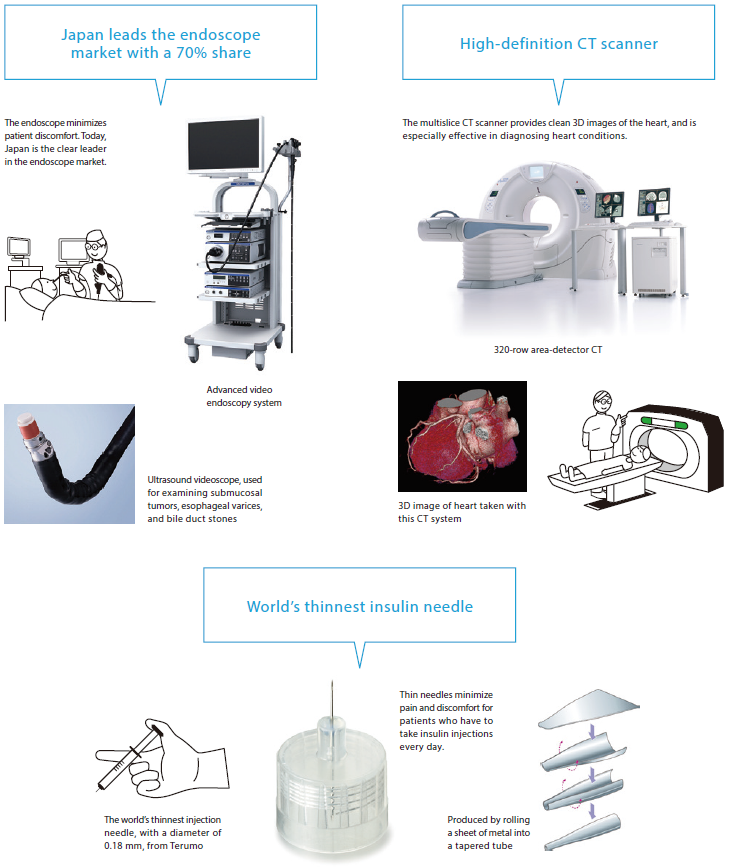One aspect of Japan’s medical services gaining global attention is the provision of minimally invasive treatment, in which patients are effectively diagnosed and treated with a minimum of stress. This is made possible by medical equipment that is easy on the patient’s body. Prime examples include endoscopes, for which Japan holds a 70 percent share worldwide, diagnostic imaging equipment that enables high-definition, high-speed imaging, and the world’s thinnest injection needles, which minimize patients’ pain.
Endoscope
For ages, doctors have wanted to be able to look inside the living body. In 1950 Japan’s Olympus created a gastroscope made of a pliable rubber tube with a camera lens at the end. This device, the precursor of today’s endoscopes, made the inside of the body visible and revolutionized the medical world. Creating it involved an extended process of trial and error, from making a minuscule lens and providing a powerful light source to selecting the tube material, optimizing the film, and waterproofing the device, but after much hard work the gastroscope was completed. The tireless improvements and refinements that followed have yielded magnifying endoscopes that can zoom in on the membrane surface and imageenhanced endoscopes that generate clear images of pathological tissue. Today, Japan is the clear leader in the endoscopy market, with a share of 70 percent.
Diagnostic Imaging Apparatus
Japan’s particular forte is computed tomography. The world’s first multislice CT scanner (320 rows), which Toshiba Medical Systems introduced in 1999, opened the way for highdefinition, high-speed imaging of the body. It eased the burden on patients by enabling quick detection of cancer and other diseases and almost halving the radiation exposure from that of conventional CT scanners. The multislice CT scanner is particularly effective in diagnosing heart conditions. In the case of aortic aneurysms, doctors can easily learn the size of the aneurysm and its risk of rupture. It is also perfect for following up on such procedures as angioplasty (expanding blood vessels with the use of balloons or stents) and bypass surgery.
World’s Thinnest Injection Needle
The world’s thinnest insulin needle, with a diameter of only 0.18 mm, is also made in Japan. The ultrathin tip minimizes the pain of insertion, and the tapered shape allows the drug to flow smoothly through the narrow needle. This needle is a great boon to diabetics, who must inject insulin every day. The needle is made by rolling a sheet of metal into a tube, a process made possible only by the die-and-mold and press technologies honed at Tokyo’s small neighborhood factories. The product is the fruit of Japan’s excellence in manufacturing.































































































































